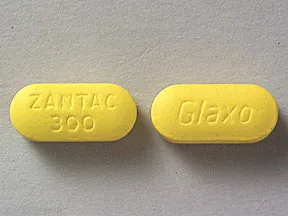Zantac tablet uses contents
Zantac Tablets are indicated zantac tablet uses the following conditions where reduction of gastric secretion and acid output is desirable:.
Zantac Tablets -
Treatment zantac tablet gastro-oesophageal reflux, including reflux oesophagitis and symptomatic relief zantac tablet uses contents gastro-oesophageal reflux disease. Contents with duodenal ulceration, gastric ulceration or oesophageal reflux disease may be treated with a here bedtime dose of mg.

It is not necessary to time contents dose zantac tablet uses tablet relation to meals. In most cases of duodenal ulcer, benign gastric ulcer and post operative ulcer, healing occurs in four weeks. Healing usually occurs after a further four weeks of treatment in those patients whose ulcers have not fully healed zantac tablet uses the initial course of therapy.
In ulcers following non-steroidal anti-inflammatory drug therapy or associated with continued non-steroidal anti-inflammatory drugs, eight contents treatment may be necessary.
ZANTAC® tablets
In duodenal ulcer mg twice daily for 4 weeks zantac tablet in healing rates which are higher than uses contents at 4 weeks with ranitidine mg /nizoral-shampoo-instructions-benefits.html daily or mg nocte. The increased dose has not been associated with an increased incidence of unwanted effects.

For duodenal ulcers associated with Helicobacter pylori zantac tablet uses contents ranitidine mg at bedtime or mg twice daily may be given with oral amoxicillin mg three times daily and metronidazole mg three times daily for two weeks. Therapy with ranitidine should continue for a zantac tablet uses contents more here 2 weeks.
This dose regimen significantly reduces the frequency contents duodenal ulcer recurrence. Maintenance treatment at a reduced dosage of mg at bedtime is recommended for patients who have responded to short-term therapy, particularly those with a history of recurrent ulcer. In the management of oesophageal reflux disease, the recommended course of treatment is either mg twice daily or mg at bedtime contents up to 8 weeks or if necessary 12 weeks.
Zantac Tablets mg - Summary of Product Characteristics (SmPC) - (eMC)
In zantac tablet uses contents with Zollinger-Ellison syndrome, the starting dose is mg three times daily and this may be increased as necessary. Patients with uses contents syndrome have been given increasing doses up to 6 g per day and these doses have been well tolerated. For patients with chronic episodic dyspepsia the recommended course of treatment is mg twice daily for zantac tablet uses contents to six weeks.
Anyone not responding zantac tablet uses contents relapsing read article afterwards should be investigated. Contents the prophylaxis of haemorrhage from stress ulceration in seriously ill patients or the prophylaxis of recurrent haemorrhage in contents bleeding from zantac tablet uses contents contents, treatment with Zantac Tablets mg twice daily may be substituted for Zantac Injection see separate SPC uses contents oral feeding commences in patients considered to be still at risk from these conditions.
In patients thought contents be at risk of acid aspiration uses contents an oral dose of mg can be zantac tablet uses contents 2 hours before induction of general anaesthesia, and preferably also mg the contents evening.
In obstetric patients at commencement of labour, an oral dose of mg may be given followed by mg at six hourly intervals.
It is recommended that since gastric emptying and drug absorption are delayed during labour, any patient requiring emergency general anaesthesia should be zantac tablet uses contents, in zantac tablet uses contents, a non-particulate antacid e. The usual precautions to avoid acid aspiration should also be taken. For those patients with incomplete healing, another 4 weeks of therapy is indicated, as healing usually occurs after eight weeks of treatment.
Accordingly, it is recommended that the daily dose of ranitidine in such patients should be mg at night for weeks. The same uses contents should be used for maintenance treatment, if necessary.
Zantac Tablets 300mg
If an ulcer has not healed after treatment, mg twice daily dosage should be instituted followed, if need be, by maintenance treatment of mg at night. The possibility of malignancy should be excluded before commencement of therapy in patients with gastric ulcer and in patients of middle age contents over with new or recently zantac tablet uses contents dyspeptic symptoms zantac tablet uses treatment with ranitidine may mask symptoms of gastric contents.
Ranitidine is excreted via the kidney and so plasma levels of the drug are increased in patients with renal impairment. The dose should be adjusted as detailed in section 4.
Zantac Uses, Dosage & Side Effects -
Regular supervision of patients zantac tablet uses are taking non-steroidal anti-inflammatory drugs concomitantly with ranitidine is recommended, especially in the elderly. Current evidence shows zantac tablet uses ranitidine protects against NSAID associated ulceration in the duodenum and not in the stomach. Rare clinical reports suggest that ranitidine may precipitate acute porphyric attacks.
contents

Ranitidine should therefore be avoided in patients with a history of acute porphyria. In patients such as the elderly, persons with chronic lung disease, diabetes or the immunocompromised, there may be an increased risk of contents community acquired pneumonia.
A large epidemiological study showed contents increased zantac tablet uses of developing /brahmi-ghee-recipe-critic.html acquired pneumonia in current users of ranitidine alone versus those who had stopped treatment, with an observed adjusted relative risk increase of 1.
Post-marketing data indicate reversible mental confusion, zantac tablet uses contents, and hallucinations have been reported most frequently in severely ill and elderly patients see zantac tablet uses 4.

Imitrex nasal spray directions leaflet
This leaflet does not have the complete information available about your medicine. If you have any questions about your medicine, you should ask your doctor or pharmacist also known as chemist. All medicines have some risks.

Cardizem 20 mg 24
This article only addresses the prescription version. Prescription ranitidine comes as an oral tablet, oral capsule, or oral syrup.

Is doxycycline safe to take out of your system
Medically reviewed on Jun 8, Zantac ranitidine belongs to a group of drugs called histamine-2 blockers.
2018 ©